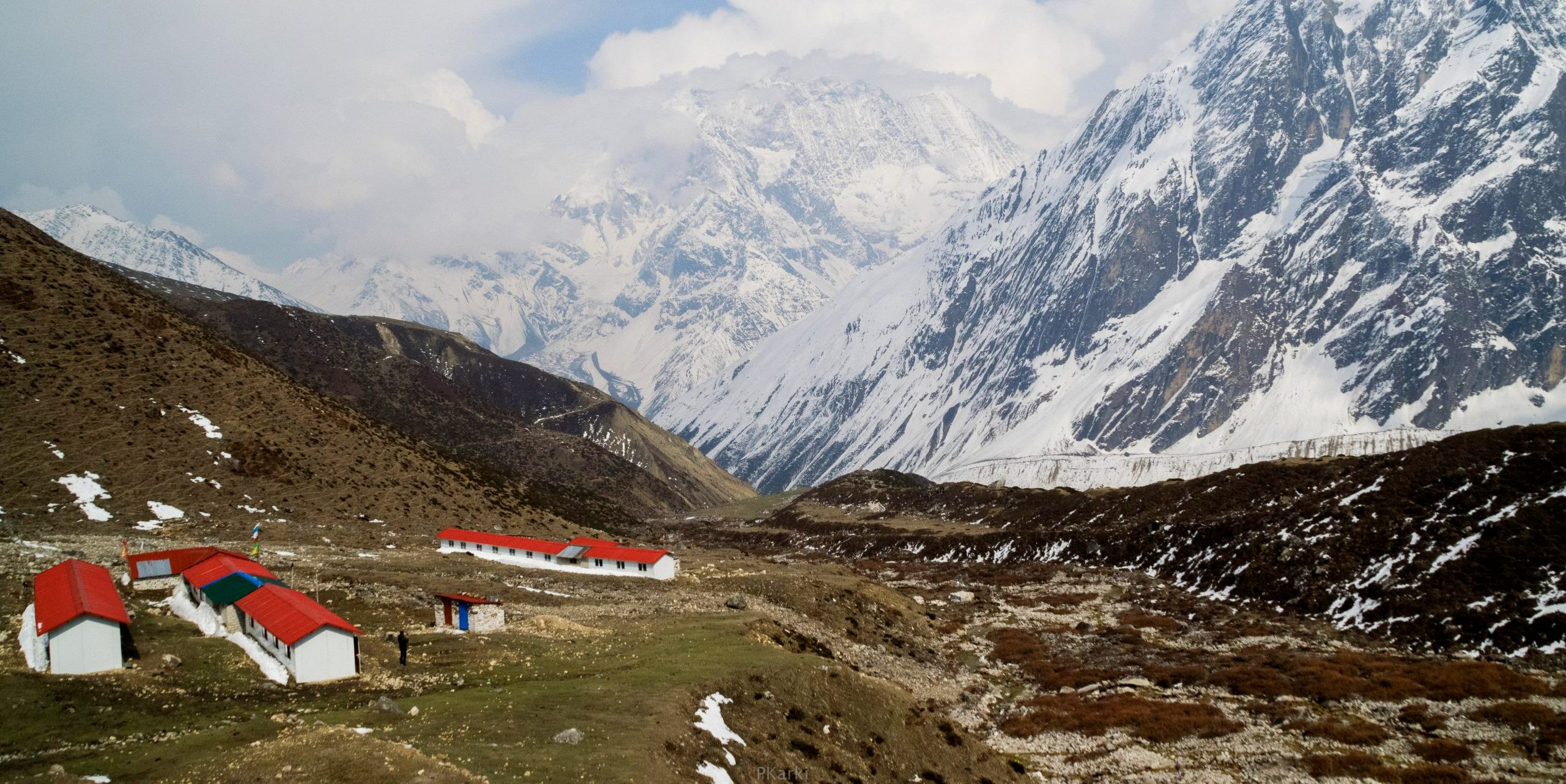Kanchenjunga Base Camp Trek
The Kanchenjunga Base Camp Trek is one of the most exhilarating yet less frequented treks in the Nepalese Himalayas, leading adventurers right to the base of the world’s third-highest peak, Kanchenjunga, which stands at a staggering height of 8,586 meters. This trek offers a unique blend of challenging trekking routes and spectacular natural scenery, set in a region that sees fewer tourists than more mainstream destinations, allowing for a more serene and authentic experience.

Key Highlights of the Kanchenjunga Base Camp Trek
-
Scenic Diversity: The trek traverses a range of environments, from lush, tropical jungles and rhododendron forests to rocky, high-altitude terrain. This variety offers trekkers an unparalleled opportunity to experience the vast biodiversity of the area.
-
Remote and Untouched: Because of its location in the far east of Nepal and its challenging nature, the paths around Kanchenjunga are less trodden compared to other popular trekking routes in Nepal, providing a more isolated and untouched hiking experience.
-
Cultural Richness: The trek goes through diverse ethnic settlements, offering an intimate glimpse into the rural life of ethnic groups such as the Limbu, Rai, and Sherpa communities. Their unique cultures, traditions, and warm hospitality significantly enrich the trekking experience.
-
Spectacular Mountain Views: Aside from Kanchenjunga itself, trekkers are treated to dramatic views of other Himalayan giants like Jannu (Kumbhakarna), Makalu, and Lhotse. The panoramas from viewpoints such as Pangpema (North Base Camp) are truly breathtaking.
-
Wildlife: The region is rich in wildlife and is part of the Kanchenjunga Conservation Area, which serves as a habitat for several wildlife species, including the snow leopard, Himalayan black bear, red panda, and various species of birds.
Trekking Routes and Duration: The trek typically starts from Suketar, Taplejung, accessed via a flight or a long drive from Kathmandu. It usually takes about 24 to 26 days to complete, depending on the specific route and pace of the trek. There are two main base camps, North and South, which can be visited as part of the trek, each offering different perspectives of the Kanchenjunga massif.
The Kanchenjunga Base Camp Trek with Relax Getaways means an adventure that combines physical challenges with the profound beauty and cultural depth of one of the world’s most majestic mountain areas.
Manaslu Circuit Secrets
The Manaslu Circuit Trek is often touted as one of the best-kept secrets in the Himalayan range of Nepal, offering an off-the-beaten-path experience that rivals the more famous Annapurna Circuit. Circling around Mount Manaslu, the world’s eighth-highest peak at 8,163 meters, this trek provides an astonishing blend of spectacular landscapes and cultural richness.
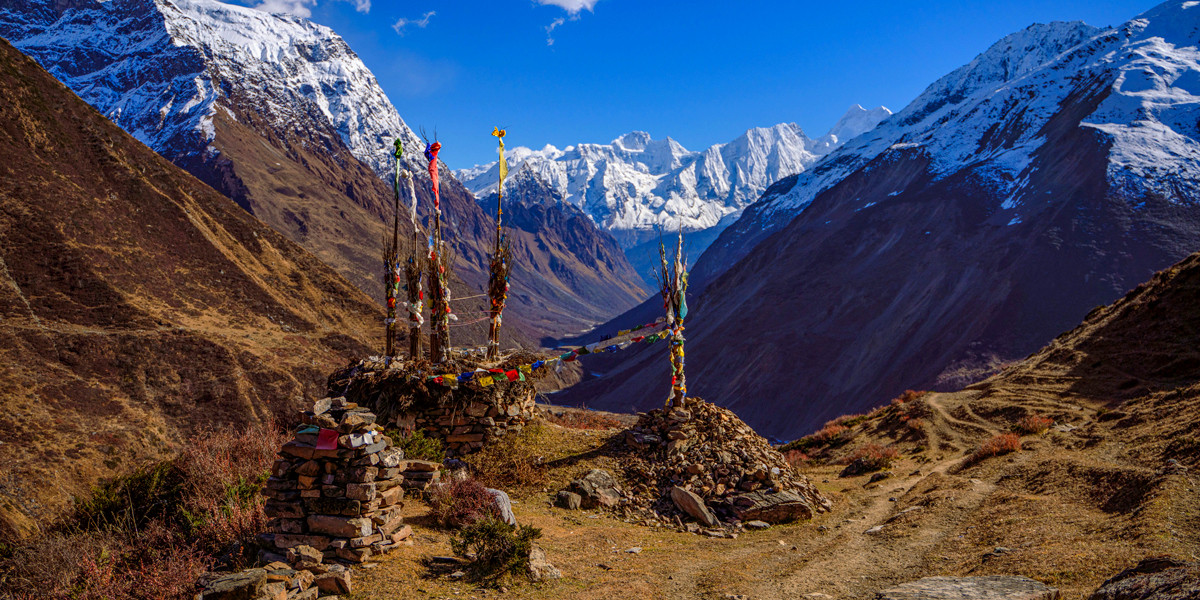
Highlights of the Manaslu Circuit Trek
-
Stunning Natural Beauty: The trek circles the majestic Manaslu mountain, offering a scenic extravaganza of snow-capped peaks, ancient forests, and vivid rhododendron woods. The Larkya La Pass, at 5,106 meters, is a challenging yet rewarding part of the trek, providing panoramic views of Manaslu, Cheo Himal, Himlung Himal, and more.
-
Rich Cultural Experience: The Manaslu Circuit goes through diverse ethnic communities, including Nubri and Tsum, where ancient Tibetan Buddhist culture prevails. The trail is dotted with traditional villages, monasteries, chortens, and mani walls, creating a vibrant cultural tapestry that offers a deep dive into the region’s traditions and ways of life.
-
Biodiversity: Trekking through the Manaslu Conservation Area, participants are exposed to a rich variety of flora and fauna, including endangered species such as the snow leopard and red panda. The conservation area helps preserve the unique biodiversity of this less-traveled region.
-
Less Crowded: Since it is less known than its neighbors like the Annapurna or Everest regions, the Manaslu Circuit sees fewer trekkers. This isolation adds to the allure of the trek, offering a more serene and introspective journey.
Trekking Route and Duration: The trek usually starts at Soti Khola, following a drive from Kathmandu, and ends in Besisahar, which is also the starting point for the Annapurna Circuit. The standard itinerary for the Manaslu Circuit takes about 14 to 20 days to complete, depending on the chosen pace and any additional side trips or rest days.
The Manaslu Circuit Trek is a journey that not only challenges the body but also enriches the spirit. It offers an intimate experience with Nepal’s grandeur, combining physical adventure with cultural immersion. For those looking to explore the hidden treasures of the Himalayas with minimal outside interference, the Manaslu Circuit with Relax Getaways offers an unforgettable expedition into the heart of Nepal’s mountainous beauty.
Upper Dolpo Expedition
The Upper Dolpo Expedition is a remarkable journey into one of Nepal's most remote and mystical regions. Known for its rugged landscapes, ancient Tibetan culture, and the famous Shey Phoksundo Lake, Upper Dolpo offers a profoundly isolated trekking experience that few other places in the Himalayas can match. Featured in Peter Matthiessen's famous book "The Snow Leopard," this region has captivated adventurers and cultural enthusiasts alike.
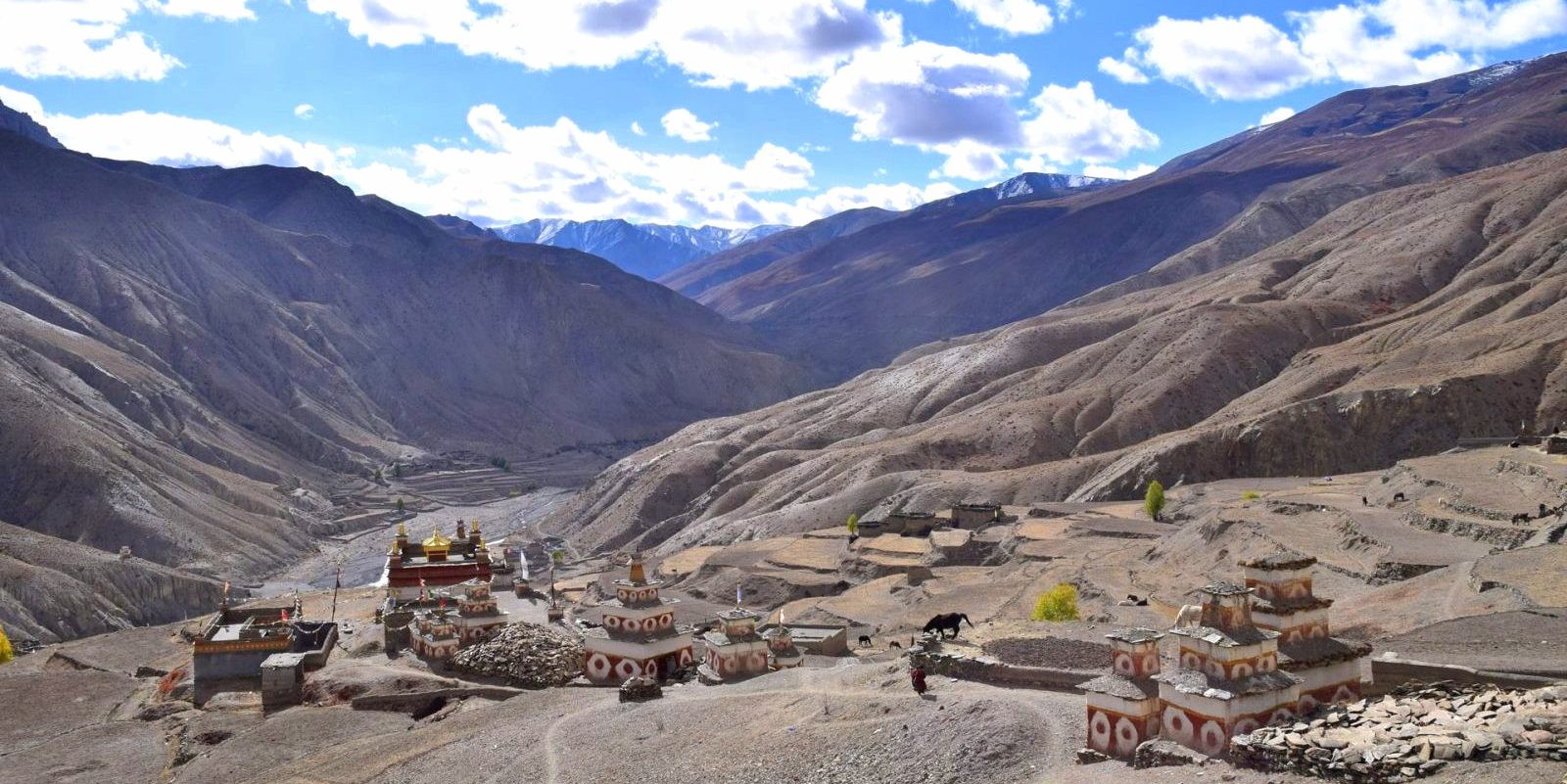
Highlights of the Upper Dolpo Expedition
-
Shey Phoksundo Lake: One of the most visually stunning aspects of Upper Dolpo is the turquoise-blue Shey Phoksundo Lake. Nestled at an elevation of 3,611 meters, it is Nepal’s deepest and second-largest lake, offering breathtaking views and a serene environment.
-
Ancient Monasteries and Culture: Upper Dolpo is a stronghold of traditional Tibetan Buddhism, largely untouched by modern influences. Trekkers can explore ancient monasteries like Shey Gompa, which is over 800 years old and is considered a spiritual heartland of the region.
-
Remote and Untouched Wilderness: The expedition traverses remote valleys, high passes, and stark landscapes that have remained unchanged for centuries. This isolation makes it one of the most untouched areas in the world, offering a true wilderness experience.
-
Rare Wildlife: The region is part of the Shey Phoksundo National Park, home to a variety of wildlife including the elusive snow leopard, Himalayan blue sheep, and the Tibetan wolf. Its diverse ecosystems range from pine forests to arid landscapes.
Trekking Route and Duration: The expedition generally starts from Juphal, after a flight from Nepalgunj, and takes about 20 to 30 days depending on the specific route and pace. The trek is challenging due to its high passes and remote trails, with several stretches that go above 5,000 meters.
Upper Dolpo remains one of the few places on earth where you can still experience a near-virgin landscape combined with profound cultural richness. The Upper Dolpo Expedition with Relax Getaways not only challenges adventurers with its rugged terrains but also immerses them in the spiritual tranquility of an ancient Buddhist culture, making it an unforgettable journey into the heart of the Himalayas.
Makalu Base Camp Adventure
The Makalu Base Camp Adventure offers a thrilling expedition to the base of Mount Makalu, the fifth highest mountain in the world, standing at an impressive 8,485 meters. This trek is renowned for its remoteness and the spectacular natural beauty of the Makalu Barun National Park, one of the largest and most ecologically diverse protected areas in Nepal. The trek not only challenges the physical stamina of its participants but also immerses them in the breathtaking vistas and rich biodiversity of the region.
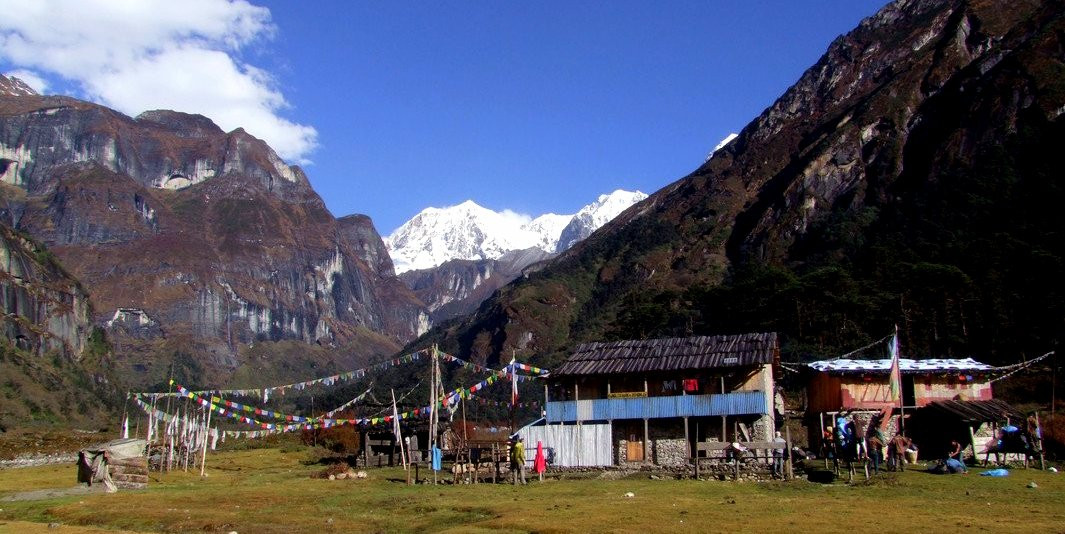
Highlights of the Makalu Base Camp Adventure
-
Diverse Landscapes: From lush tropical rainforests at lower elevations to the stark, rocky base camp area, the trek to Makalu Base Camp traverses through a range of landscapes. This dramatic change in scenery provides trekkers with a unique opportunity to experience the vast ecological diversity of Eastern Nepal.
-
Stunning Mountain Views: The trail offers stunning views of some of the world’s highest peaks, including Mount Makalu, Lhotse, Everest, and Kangchenjunga. As trekkers approach the base camp, the landscape opens up to reveal breathtaking panoramas of towering, snow-capped mountains.
-
Rich Biodiversity: The Makalu Barun National Park is a biodiversity hotspot, home to an array of endemic and endangered species of flora and fauna, including the red panda and the snow leopard. The park's diverse ecosystems range from subtropical jungles to alpine grasslands, making it a haven for nature enthusiasts.
-
Cultural Insights: The trek passes through various indigenous communities, including Rai and Sherpa villages. These interactions provide trekkers with insights into the local lifestyles, traditions, and practices that have been preserved over centuries in this isolated region.
Trekking Route and Duration: The adventure usually begins with a flight from Kathmandu to Tumlingtar, followed by a drive to Chichila, the starting point of the trek. The standard itinerary for reaching Makalu Base Camp typically spans about 14 to 16 days, depending on the pace of the group and weather conditions.
The Makalu Base Camp Adventure with Relax Getaways offers a deep dive into one of the most untouched regions of the Himalayas, where the natural grandeur and cultural richness provide a truly unique and memorable trekking experience.
Rara Lake Hidden Trek
The Rara Lake Hidden Trek is a captivating journey to Rara Lake, the largest lake in Nepal, located in the remote northwestern part of the country. This trek is celebrated not just for its stunning natural beauty, but also for its tranquil, off-the-beaten-path experience in the lesser-known Rara National Park. The trek provides an ideal opportunity for those looking to escape the more crowded trekking routes and immerse themselves in an untouched natural paradise.
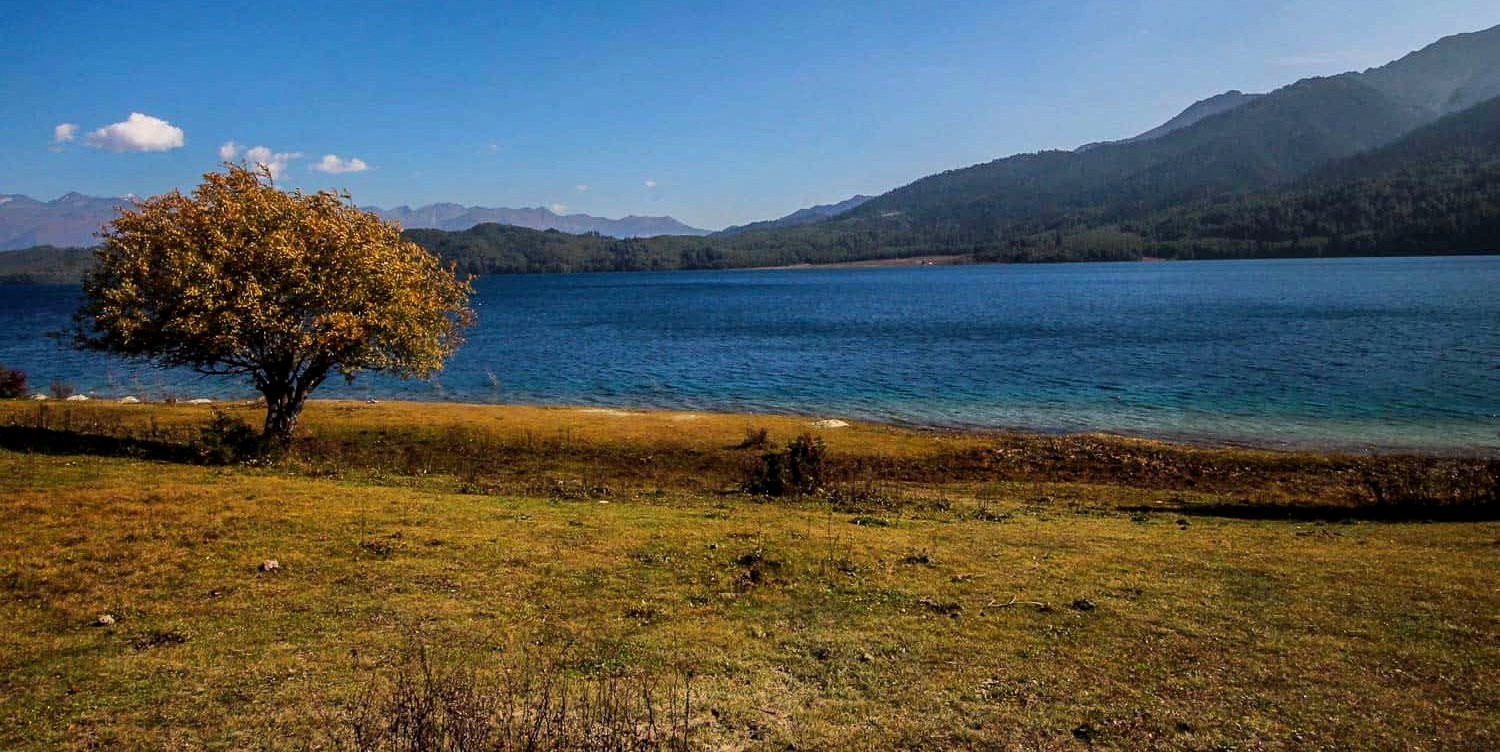
Highlights of the Rara Lake Hidden Trek
-
Rara Lake: At an altitude of 2,990 meters, Rara Lake is renowned for its azure waters and serene, picturesque setting surrounded by alpine meadows and forests of pine, juniper, and spruce. The lake area offers a peaceful retreat with spectacular views of the surrounding hills and distant snow-capped mountains.
-
Biodiversity: Rara National Park, the smallest national park in Nepal, is a biodiversity hotspot that is home to a variety of wildlife including the Himalayan black bear, leopard, musk deer, and over 214 species of birds. The park also features a range of beautiful flowers, especially rhododendrons blooming vibrantly during the spring months.
-
Cultural Experience: The trek routes through various Magar and Thakuri villages, offering trekkers an insight into the local lifestyles and cultures that are markedly different from those found in other parts of Nepal. These communities provide a warm welcome to trekkers with their traditional hospitality.
-
Isolation and Tranquility: Due to its remote location, the trek to Rara Lake sees fewer visitors than more popular destinations in Nepal, offering a much more isolated and tranquil experience. This solitude enhances the beauty of the trek and makes it a perfect spot for those seeking peace and quiet in the lap of nature.
Trekking Route and Duration: The journey to Rara Lake typically starts with a flight from Kathmandu to Nepalgunj, followed by another flight to Jumla from where the actual trek begins. The entire trek can last about 7 to 10 days, depending on the pace and specific route taken. Some trekkers choose to extend their journey to explore more of the surrounding areas.
Exploring the Rara Lake Hidden Trek with Relax Getaways offers a unique blend of natural beauty, cultural interaction, and serene isolation, perfect for those looking to experience one of Nepal’s hidden gems in a peaceful and unspoiled setting.
Tsum Valley Cultural Trek
The Tsum Valley Cultural Trek is a fascinating journey into the Tsum Valley, also known as the "Hidden Valley," which is situated in northern Gorkha, Nepal. This trek is especially renowned for its outstanding natural beauty and the rich cultural heritage of the Tsumbas, the local inhabitants of the valley. Opened to trekkers only in 2008, the Tsum Valley remains one of the most secluded and unspoiled trekking destinations in Nepal, offering a profound cultural experience akin to stepping back in time.
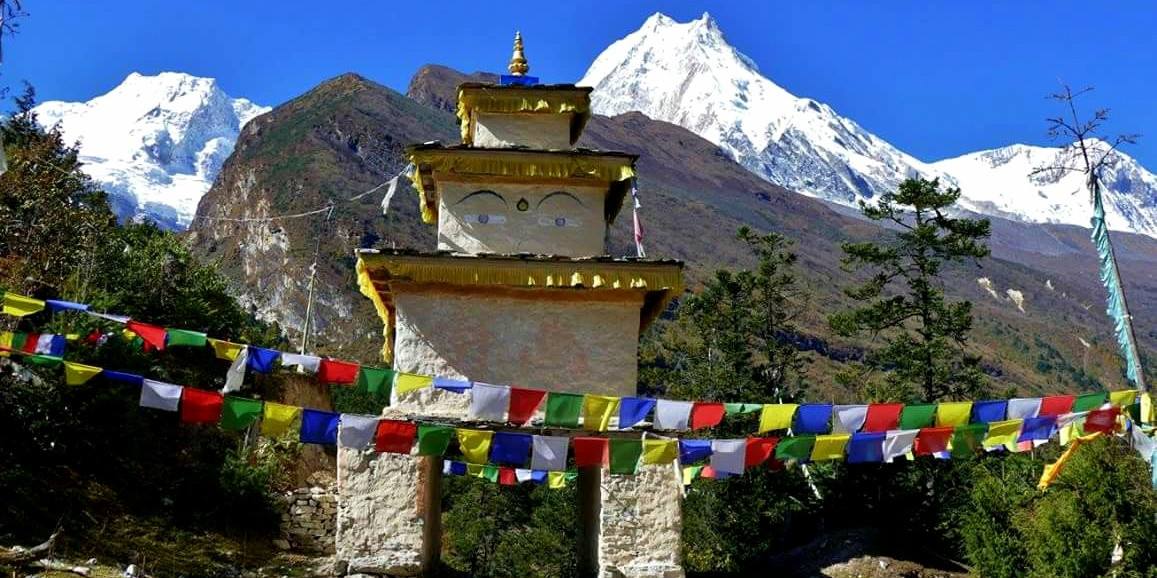
Highlights of the Tsum Valley Cultural Trek
-
Rich Cultural Heritage: Tsum Valley is a bastion of ancient Tibetan Buddhism, and the trek offers an intimate look at this culture. Trekkers can explore centuries-old monasteries like Mu Gompa and Rachen Gompa, traditional chortens, and secluded cave hermitages that have been used by Buddhist monks for millennia.
-
Stunning Scenery: The valley offers dramatic views of the surrounding Himalayas, including Buddha Himal and Himalchuli to the west, Ganesh Himal to the south, and Sringi Himal to the north. The landscapes are varied, ranging from green terraced fields to rugged mountainous terrain.
-
Unique Flora and Fauna: Tsum Valley, part of the Manaslu Conservation Area, is home to unique flora and fauna. Trekkers might catch glimpses of rare wildlife such as the Himalayan Thar and Blue Sheep. The region also features a variety of plants that are vital in local herbal medicine.
-
Spiritual Experience: The valley is considered a beyul, one of the hidden valleys designated by Guru Rinpoche (Padmasambhava) as refuges for those seeking spiritual solace in times of trouble. This spiritual significance is palpable as you pass through villages adorned with prayer flags and mani walls.
Trekking Route and Duration: The trek typically starts with a drive from Kathmandu to Soti Khola, followed by a trek up through the Budhi Gandaki Valley. The journey into the Tsum Valley diverges east from the main Manaslu Circuit route at Chumling. The typical duration for a round trip to the Tsum Valley and back is about 18 to 20 days, allowing for proper acclimatization and exploration of the valley.
Tsum Valley Cultural Trek with Relax Getaways offers a unique opportunity to immerse yourself in the ancient traditions and breathtaking landscapes of one of Nepal’s most sacred and secluded valleys. This trek not only challenges the body but also enriches the spirit, making it a must-do for those seeking to experience the profound cultural and natural beauty of the Himalayas.
Tips for Unexplored Treks in Nepal
Trekking in unexplored regions of Nepal offers a unique adventure, but it also requires careful preparation and consideration of several factors to ensure a safe and enjoyable experience. Here are some essential tips for anyone planning to embark on unexplored treks in Nepal:
-
Choose the Right Season: Most unexplored treks in Nepal are best undertaken during the spring (March to May) and autumn (September to November) seasons. These months typically feature stable weather, clear skies, and moderate temperatures, making trekking conditions ideal.
-
Hire an Experienced Guide: Due to the remote and less-developed nature of unexplored treks, it is crucial to hire an experienced and licensed guide. A knowledgeable guide not only navigates the route but also provides insights into the local culture and helps facilitate interactions with local communities.
-
Obtain Necessary Permits: Many remote areas in Nepal require special trekking permits. Ensure you have all the required permits and documentation before starting your trek, as these help in conservation efforts and ensure your legality on the trails.
-
Prepare for Altitude: Many unexplored treks involve high altitudes, so it’s important to understand the risks of altitude sickness and know how to mitigate them. Plan for proper acclimatization days in your itinerary to adjust to higher elevations gradually.
-
Pack Appropriately: Remote treks mean fewer opportunities to pick up supplies. Pack essential items such as a good quality backpack, sleeping bag suitable for cold temperatures, layered clothing, a first-aid kit, water purification tablets, and enough food if there are no tea houses on the route.
-
Stay Connected: While connectivity may be limited, carrying a satellite phone or a GPS tracker can be a lifesaver in emergencies. Inform someone of your itinerary and regularly update them if possible.
-
Respect Local Customs: Remote communities may have unique customs and traditions. Show respect by learning about and adhering to local norms, dressing appropriately, and being mindful of your impact on their lifestyle and environment.
-
Leave No Trace: Practice eco-friendly trekking by carrying back all your garbage, using biodegradable products, and minimizing your environmental impact. This is crucial in preserving the pristine nature of these unexplored areas.
-
Insurance: Always travel with adequate travel insurance that covers high altitude trekking and possible medical evacuation. This is especially important in remote areas where healthcare facilities are scarce.
-
Be Physically Prepared: The unpredictable nature and potential challenges of unexplored trails require good physical condition. Engage in pre-trek training and conditioning, focusing on cardiovascular fitness, strength training, and hikes that simulate the trekking conditions.
By following these tips, you can enhance your experience and safety on unexplored treks in Nepal, allowing you to fully enjoy the beauty and solitude of these hidden trails.
Ideal Time for Unexplored Treks in Nepal
When planning unexplored treks in Nepal, choosing the right time of year is crucial for a safe and enjoyable experience. The best seasons for trekking in Nepal are generally spring and autumn due to favorable weather conditions, which include stable temperatures, clear skies, and minimal precipitation. Here's a closer look at each:
Spring (March to May): Spring is one of the most popular trekking seasons in Nepal. During these months, the weather warms up, and the snow from winter starts to melt, making higher trails accessible. This season is particularly beautiful as the flowers, especially rhododendrons, are in full bloom, adding spectacular colors to the landscapes. The visibility is also excellent during spring, offering clear views of the Himalayan peaks.
Autumn (September to November): Autumn is considered the best overall time for trekking in Nepal, including for unexplored routes. Following the monsoon season, the air is clean and the skies are the clearest, offering exceptional views of the mountains. The weather is generally dry and stable, which is critical for safe trekking and camping in remote areas.
Off-Peak Seasons
-
Summer/Monsoon (June to August): Trekking during the monsoon can be challenging due to heavy rains, leeches, slippery trails, and obscured mountain views. However, certain regions like Upper Mustang and Dolpo lie in the rain shadow of the Himalayas and are more suitable for summer trekking.
-
Winter (December to February): Winter can be a viable option for lower altitude treks, as the cold is less severe in these areas. However, higher altitude treks might be risky due to heavy snowfall and freezing temperatures, which could lead to closed passes and trails.
By selecting the optimal time for your trek and preparing accordingly, you can enhance your trekking experience and enjoy the natural beauty and cultural richness of Nepal's less-traveled paths.
Exploring the uncharted trails of Nepal offers a unique opportunity to experience some of the most pristine and awe-inspiring landscapes on earth. From the rugged terrains of Kanchenjunga to the sacred valleys of Tsum, these less-traveled paths promise solitude, adventure, and a deep connection with local cultures untouched by mainstream tourism. Ideal during spring and autumn, these treks provide a perfect blend of challenge and tranquility, inviting adventurers to step off the beaten path and explore Nepal's hidden gems. By venturing into these remote areas, trekkers not only challenge themselves but also contribute to sustainable tourism, preserving the natural beauty and cultural heritage of these regions for future generations.
FAQs for Unexplored Treks in Nepal
Q: What is the best time of year to go on unexplored treks in Nepal?
A: The best times to trek in Nepal are during the spring (March to May) and autumn (September to November). These months generally offer clear skies, stable weather, and moderate temperatures.
Q: Do I need any special permits for these treks?
A: Yes, most unexplored treks in Nepal require special permits, especially those in restricted areas like Upper Dolpo, Tsum Valley, and Kanchenjunga. These permits help manage the number of visitors and contribute to the conservation of these areas.
Q: Are these treks suitable for beginners?
A: Unexplored treks often involve challenging terrain and higher altitudes, making them more suitable for experienced trekkers. Beginners may need to undertake considerable preparation or choose less demanding routes.
Q: What should I pack for an unexplored trek in Nepal?
A: Essential items include sturdy hiking boots, thermal and waterproof clothing, a sleeping bag suitable for cold climates, a first-aid kit, a water purification system, and energy-rich snacks. Don’t forget to carry a detailed map and possibly a guidebook specific to the area.
Q: How can I ensure my safety during these treks?
A: Always trek with a knowledgeable guide, particularly in remote and unexplored areas. Stay updated on weather conditions, and be prepared for altitude sickness by acclimatizing properly and staying hydrated. It’s also wise to register your trek itinerary with a local trekking agency or the embassy if you’re a foreign national.
Q: What are the accommodation options like on these treks?
A: Accommodation can vary greatly depending on the trek. Some treks have established tea houses and lodges, while others, particularly in more remote areas, might require camping. Always check in advance what type of accommodation is available.
Q: Can I do these treks independently?
A: While it is possible to trek independently, it is not recommended for most unexplored treks. Local guides not only enhance safety but also enrich your trekking experience with their knowledge of the local culture, flora, fauna, and geography.
Q: How do I minimize my environmental impact while trekking?
A: Practice Leave No Trace principles: pack out all your trash, stay on marked trails, use biodegradable products, and respect wildlife and local customs. Opting for eco-friendly lodges and supporting conservation initiatives are also good practices.
For the Nepal tour, please click here.
If you are looking for different kinds of Nepal Tours or Trekking Packages, feel free to contact us.
